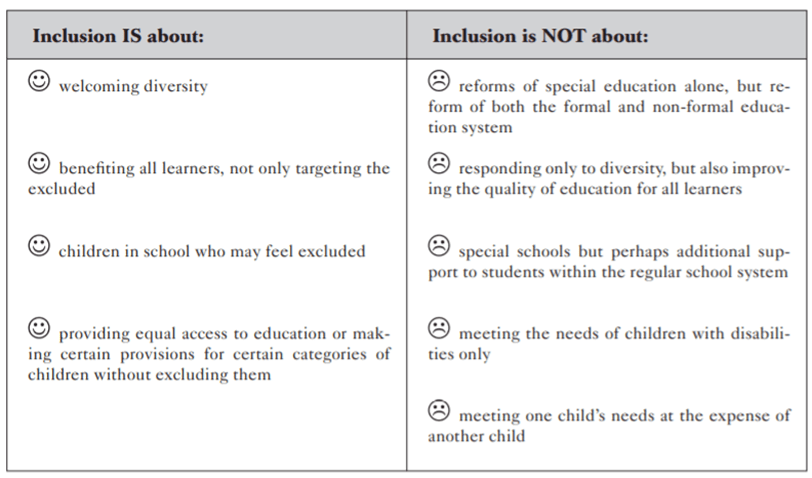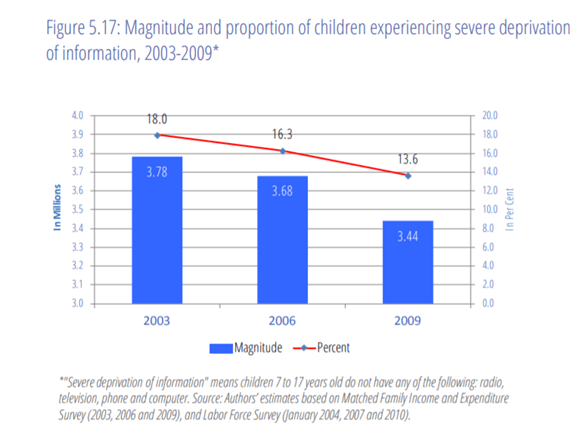
According to the press release published by the Philippine Statistics Authority (PSA) 16.7% of Filipinos are living under poverty[1]. This means, there are 17.7 million Filipinos do not have enough income to support their family’s basic needs. In a study from UNICEF, poverty has a major impact on the physical and intellectual growth of a child[2]. While according to these research, it shows that there are children who lack interest in going to school, a major percentage of these are due to the increasing labor participation of the youth ages 16-17 years old, and the little expectations from education personnel that contributes to a child’s lack of interest in education.
In a separate study from Census of Population and Housing (CPH) last 2010, there are also 1.57% of 92.1 million Filipino population are with disability. Because of their physical limitations, persons with disabilities (PWD) are frequently subject to discrimination and their rights to access services like education are being deprived to them.
With this, it is important to look back on the reason why do we need inclusive education for all children regardless of the physical and economic differences.
What is Inclusive Education?
According to UNESCO, inclusion in education is a process of addressing the diversity needs of all learners through increasing participation learning, cultures and communities, and reducing exclusion within and from education[3]. This definition encapsulates the three principles on the rights-based approach to education:[4] First, is the access to free and compulsory education; second, is the equality, inclusion and non-discrimination; third, the right to quality education, content and processes.
Interpreting these arguments above, this just simply means that no child should be deprived of education. They should not be left behind in getting their educational needs because as a child, it is their right to be educated. This statement is also in support with the Universal Declaration of Human Rights, where it states that everyone has the right to education.
The table below briefly explains what inclusion in education is all about:

Challenges in Inclusive Education
Poverty
Poverty, as for UNICEF, is one of the main sources of illiteracy as some children cannot afford to go to school. They struggle to pay for their enrollment, they cannot easily participate in school projects because they have to spend money for the materials they might need for it in which they cannot easily provide, and sometimes, this includes the transportation expense they might need to go to school.
This already defies the Article 26 of Declaration of Human Rights that everyone should be subject to free education, to at least the basic level.
In support to this, in a report from Philippine Statistics Authority published , as of 2017, 6 out of 10 families are deprived of basic education[5]. It also shows that there is one member of a family aged 18 years old did not complete basic education.[6]
Implementing Rights-Based Approach
According to UNESCO, inclusion is a never-ending search to find better ways of responding to diversity. [7]However, in some cases here in the Philippines, there are limitations to this aspect as some educational institutions nor its personnel are not fully equipped to support the needs of some students. Many have been generalizing that all students need the same interventions. However, some students, particularly those persons with disabilities might need a different approach when it comes to enjoying education.
Inclusive Education policies are indeed recommended to make every person feel welcome to be part of the knowledge community. Teaching personnel are also recommended to undergo training on how they can provide the proper intervention to their students regardless of their background, physical, economic, or other differences.
Deprivation to Information
Deprivation to information is interrelated to the results caused by poverty. According to UNICEF’s study on Child Poverty, deprivation of information is simply due to the absence of television, radio, computer or any pieces of technology used to access new, relevant information[8]. According to a comparative result presented in this report, a variance of 5.6% has seen from year 2003 to 2009, showing decrease in deprivation but shows slow and insignificant improvements.

Virlanie’s Stand on Inclusive Education
In Virlanie, What we fight for is very clear. We aim to ensure that equal access to education and even vocational trainings for vulnerable children, and persons with disabilities (PWD) are being provided and they get to enjoy the right and quality education they deserve. With inclusive education, we cannot just only empower the youth and those people with physical limitations, but we can also help them become productive and independent individuals who can reach their dreams in life.
Every year, we celebrate #Give2Achieve, this is Virlanie’s signature campaign for education where we call on our supporters to advocate Inclusive Education in the Philippines. This year, we have prepared some exciting activities where you can express your support through the first ever Virlanie virtual run, in partnership with Virtual Race PH. As early as now, you can now register to race for the benefit of Virlanie kids’ education.
Virlanie Foundation, is also a proud and active member of Child Rights Network, where we also share a stand on Inclusive Education for all children, and persons with disabilities.
References:
[1] “Updated 2015 and 2018 Full Year Official Poverty Statistics.” Philippine Statistics Authority, June 4, 2020. Philippine Statistics Authority. https://psa.gov.ph/sites/default/files/Press%20Release%20Updated%20Full%20Year%202018%20Official%20PovStat%20signed.pdf.
[2] Ronina Asis et al., “Child Poverty in the Philippines” (Makati, Philippines: United Nations Children’s Fund, 2015), VII.
[3] UNESCO, Guidelines for Inclusion: Ensuring Access to Education for All (Paris: Unesco, 2005), 13.
[4] UNESCO, Guidelines for Inclusion: Ensuring Access to Education for All (Paris: Unesco, 2005), 12.
[5] Lisa Grace Bersales, “Filipino Families Are Most Deprived in Education,” Philippine Statistics Authority, 2018, https://psa.gov.ph/content/filipino-families-are-most-deprived-education-0,
[6] Lisa Grace Bersales, “Filipino Families Are Most Deprived in Education,” Philippine Statistics Authority, 2018, https://psa.gov.ph/content/filipino-families-are-most-deprived-education-0
[7] UNESCO, Guidelines for Inclusion: Ensuring Access to Education for All (Paris: Unesco, 2005), 15.
[8] Ronina Asis et al., “Child Poverty in the Philippines” (Makati, Philippines: United Nations Children’s Fund, 2015), 34.